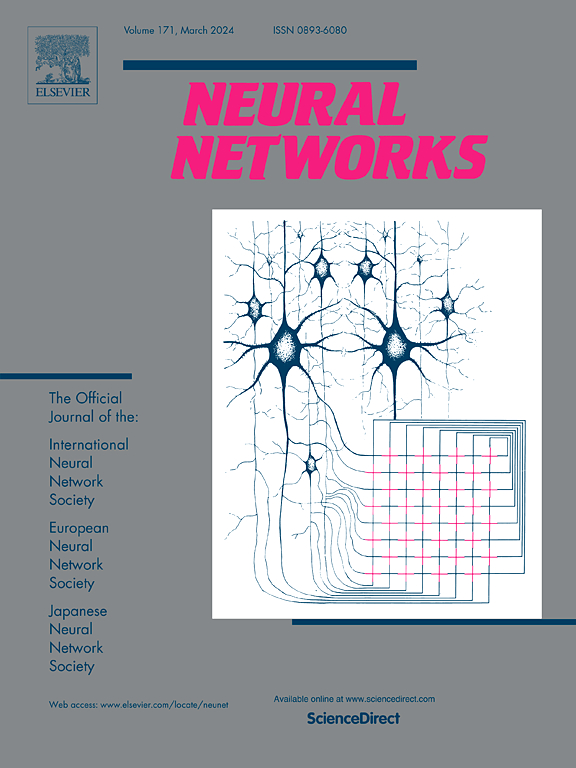PerCNet: Periodic complete representation for crystal graphs
IF 6
1区 计算机科学
Q1 COMPUTER SCIENCE, ARTIFICIAL INTELLIGENCE
引用次数: 0
Abstract
Crystal molecules are considered as graph structures in different representation methods. A reasonable crystal representation method should capture the local and global information. However, existing methods only consider the local information of crystal molecules by modeling the bond distance and bond angle of first-order neighbors of atoms, which leads to the issue that different crystals will have the same representation. To solve this many-to-one issue, we consider the global information by further considering dihedral angles. We propose a periodic complete representation of graph modeling and a calculation algorithm for infinite extended crystal materials. A theoretical proof for the representation that satisfies the periodic completeness is provided. Based on the proposed representation, we then propose a network for predicting crystal material properties, PerCNet, with a specially designed message-passing mechanism. To our best known, we are the first work that ensures the representation corresponds one-to-one with the crystal material based on graph modeling. Extensive experiments are conducted on two large-scale real-world material benchmark datasets. The PerCNet achieves the best performance among baseline methods in terms of MAE. Our code is available at https://github.com/JiaoHuang111/PerCNet.
PerCNet:晶体图的周期性完整表示
在不同的表示方法中,晶体分子被视为图结构。合理的晶体表示方法应该捕捉局部和全局信息。然而,现有的方法只考虑了晶体分子的局部信息,即对原子一阶相邻的键距和键角进行建模,这导致了不同晶体具有相同表示方法的问题。为了解决这个多对一的问题,我们通过进一步考虑二面角来考虑全局信息。我们为无限扩展晶体材料提出了周期性的完整图建模表示法和计算算法。我们提供了满足周期完整性的表示法的理论证明。在此基础上,我们提出了一种预测晶体材料特性的网络 PerCNet,该网络具有专门设计的消息传递机制。据我们所知,我们是第一项基于图建模确保表征与晶体材料一一对应的工作。我们在两个大规模真实材料基准数据集上进行了广泛的实验。就 MAE 而言,PerCNet 在基线方法中取得了最佳性能。我们的代码见 https://github.com/JiaoHuang111/PerCNet。
本文章由计算机程序翻译,如有差异,请以英文原文为准。
求助全文
约1分钟内获得全文
求助全文
来源期刊

Neural Networks
工程技术-计算机:人工智能
CiteScore
13.90
自引率
7.70%
发文量
425
审稿时长
67 days
期刊介绍:
Neural Networks is a platform that aims to foster an international community of scholars and practitioners interested in neural networks, deep learning, and other approaches to artificial intelligence and machine learning. Our journal invites submissions covering various aspects of neural networks research, from computational neuroscience and cognitive modeling to mathematical analyses and engineering applications. By providing a forum for interdisciplinary discussions between biology and technology, we aim to encourage the development of biologically-inspired artificial intelligence.
 求助内容:
求助内容: 应助结果提醒方式:
应助结果提醒方式:


